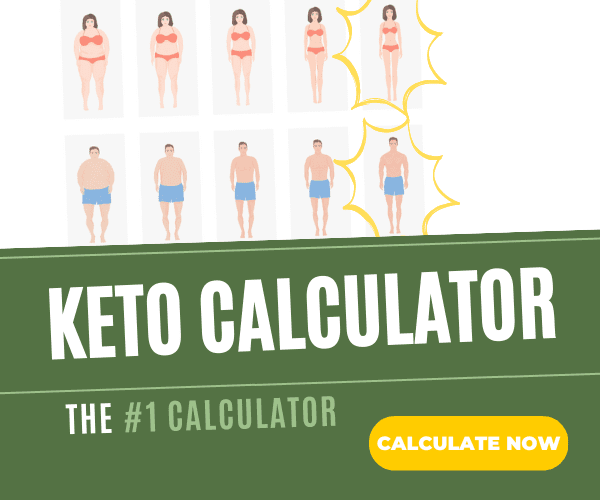
Exercise of any kind is usually a positive addition to your healthy lifestyle, and many keto dieters enjoy exercising to complement their keto fat loss and stay fit. You might be wondering if there are specific ways to exercise and types of exercises that could maximize the beneficial results of your ketogenic diet. You’ve been working hard to improve your nutrition and lifestyle and are probably interested in optimizing your success. Let’s look at the best exercises for those on keto.
What Are the Best Ways to Exercise for Those on Keto?
Resistance Training
Strength and resistance training helps you build muscle, which helps you maintain your metabolic rate. Resistance training involves using external resistance, such as from bands, weights, or bodyweight, to improve your strength and endurance and make your muscles work harder. Because a ketogenic diet improves endurance and muscle building, you may be able to handle longer and stronger workouts when you’re eating this way.
Remember, studies and anecdotal reports have proven that you don’t necessarily need carbs to build muscle. What if you could handle more reps to pump up those biceps on keto? If you’re fueled up on carbs, you might feel groggy and unable to lift heavier weights or perform more reps. What goes up must come down and when you spike your blood sugar with all those carbs, it comes down some time later. Check out our detailed article for more info on why eating too many carbs makes you tired. The keto diet involves eating plenty of healthy fats on a keto diet, which provide much more energy per gram and keep you feeling fuller for longer.
Endurance Training
Studies show that ultra-athletes following low-carb, high-fat diets had better endurance and performance than ultra-athletes that didn’t restrict carbs. [1]
This means if you’re eating a healthy ketogenic diet, you may be able to handle endurance exercises like running and cycling longer distances. Any type of exercise that increases your heart rate for a prolonged period of time is considered an endurance exercise. Since ketosis helps you better manage your blood sugar, you won’t experience a carb crash when your energy depletes before you’re finished working out.

Lower Intensity Exercises
If you’re newer to the ketogenic diet, you may want to start with lower-intensity activities, like restorative yoga, jogging, walking, rowing, and swimming, until your body and metabolism adjust. This way, you can lower your chances of developing keto flu. Some exercise seems to help many people’s keto flu symptoms and the transition into ketosis, so you may need to experiment with exercise type and duration to find what works best for you.
High-Intensity Workouts
When it comes to high-intensity activities like sprinting, swimming laps, and boxing, carbs can provide a nice hit of energy. Of course, you can still perform these exercises on a ketogenic diet, but you may notice differences in your performance either way. Each individual reacts differently depending on their metabolism, age, general health, and other factors, but plenty of keto dieters enjoy these high-intensity activities.
A ketogenic diet accelerates muscle recovery and improves inflammation, so you may recover better following high-intensity activities and resistance training. [2] Whether or not you’re following a ketogenic diet, you might decide to schedule the carbs you do consume around your higher-intensity workouts and resistance training.
The Targeted Approach

If you’re planning on lifting heavy weights, sprinting, or jumping, you could consider the targeted ketogenic approach. With TKD, you eat a total of 20-50 grams of net carbs every day about 30 minutes before and after your workout. The idea is to give your muscles enough glycogen to optimize performance and recovery. There’s also the cyclical ketogenic diet (CKD), where you consume a low-carb keto diet for 5 or 6 days and then a lower fat, higher carb diet for 1 or 2 days.
Exercising on Keto
It’s important to note that until your glycogen stores have depleted enough and your body has fully transitioned into burning fat for fuel, you may not experience the exercise-related benefits of the metabolic state of ketosis. Glycogen is the stored form of glucose in your muscles and liver that your body breaks down to release glucose into your bloodstream to fuel your cells when you need a quick boost of energy. Once your glycogen is depleted, your body can produce ketones, achieve ketosis, and begin to experience positive results.
With any diet, it’s best to try different types of exercises that improve and maintain your stability and flexibility. Aerobic exercises like cardio should be balanced out with anaerobic exercises like weightlifting or HIIT. Yoga and other flexibility exercises stretch your muscles and strengthen your core.
The best exercises to maximize a ketogenic diet will vary depending on factors like age, metabolism, general health, and level of physical activity. Overall, there are lots of studies concluding that keto is best for endurance exercises like long-distance running and lower-intensity exercises such as restorative yoga. That being said, you could find you feel more athletic, energized, and motivated on keto and you’re succeeding with exercises and higher-intensity activities you would have struggled with before when you were following the standard carb-loaded American diet.
Popular carb-heavy philosophies saturate the fitness world and give keto a bad rep. Still, the truth is plenty of athletes and non-athletes report that they feel better working out when they live a healthy ketogenic lifestyle. Studies have landed on similar conclusions that going keto can be advantageous for endurance, performance, muscle recovery, fat burning, and beyond.
References
Ma, S., & Suzuki, K. (2019). Keto-adaptation and endurance exercise capacity, fatigue recovery, and exercise-induced muscle and organ damage prevention: A narrative review. Sports (Basel), DOI: 10.3390/sports7020040
Zinn, C., Wood, M., Williden, M., Chatterton, S., & Maunder, E. (2017). Ketogenic diet benefits body composition and well-being but not performance in a pilot case study of New Zealand endurance athletes. J Int Soc Sports Nutr, DOI: 10.1186/s12970-017-0180-0









